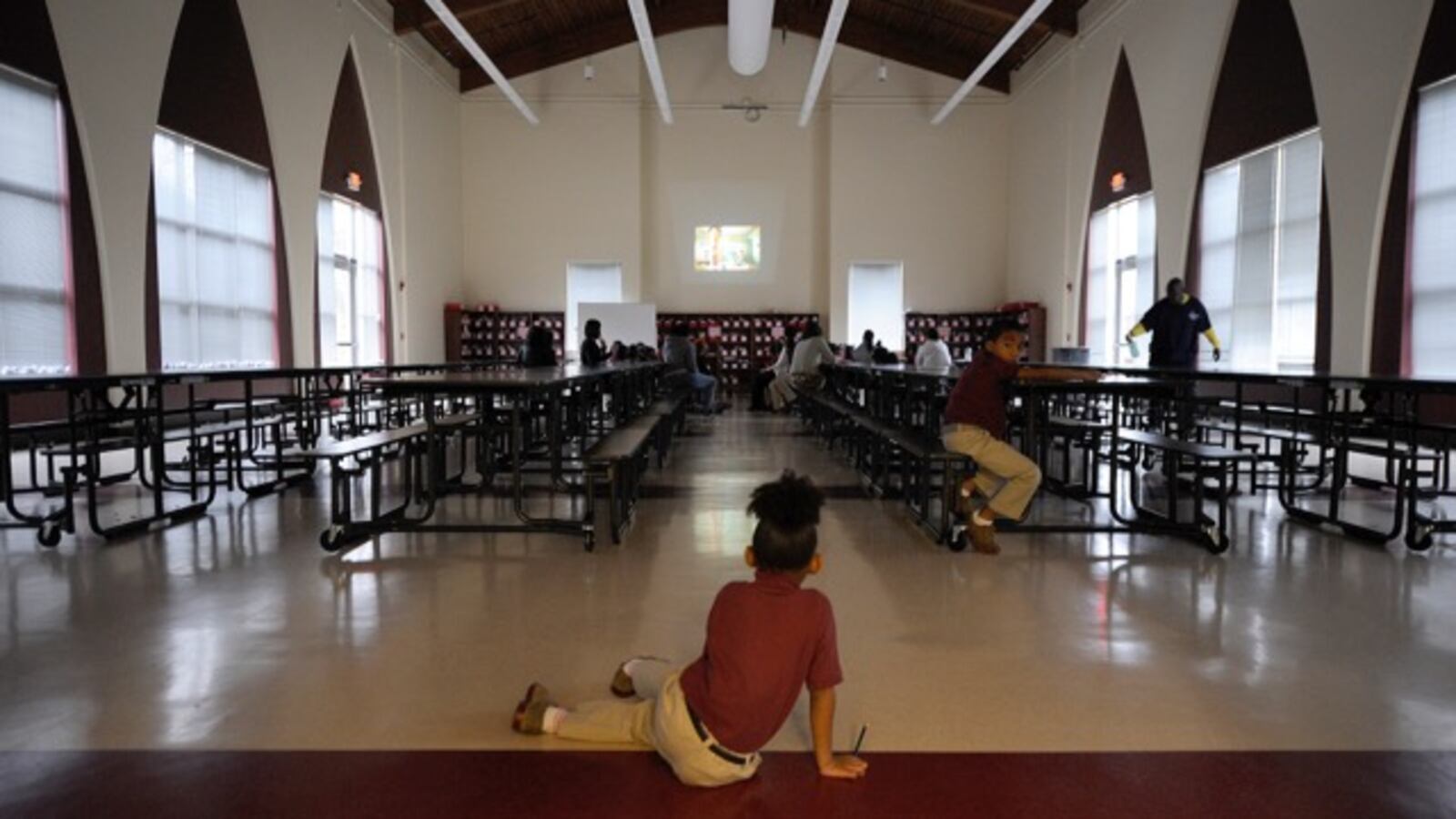School leaders have one thing in common regardless of whether they lead private, charter or traditional public schools: They are cash strapped.
At least, that was the common theme at a school finance discussion hosted in Indianapolis last night by the Mind Trust and UNCF. The panelists included: Kelli Marshall who leads the Tindley Accelerated Schools charter network, Weston Young who is chief financial manager for Indianapolis Public Schools and Joseph Heidt, president of the private Catholic Providence Cristo Rey High School. Melissa Ambre, director of the Indiana Department of Education Office of Finance, filled out the panel.
While all the three education leaders face different challenges, the schools they serve are educating primarily low-income students, and each spoke about the struggle to educate students with limited resources.
All three high schools are heavily reliant on state funds — more than 95 percent of Providence Cristo Rey students receive tuition vouchers from the state— and there unspoken theme of the conversation was a call for lawmakers to increase funding. State funding for schools has increased slightly in recent years, but it is about 4 percent lower per student than it was before the recession, according to a report from the Indiana University Center for Evaluation and Education Policy.
Providence Cristo Rey High School is part of a national network of Catholic schools. More than 93 percent of its students are poor enough to qualify for subsidized meals, and when the school evaluates how much each family can afford to pay, the average is about $300, Heidt said. That means Providence Cristo Rey has to rely on money from other sources, such as philanthropy and an unusual work study program, where students work for corporate partners and their income subsidizes tuition.
“As a private school … it’s not manna from heaven, where there’s an unending amount of funds,” Heidt said. “We are very busy in terms of reaching out to the community to support the education of the students we serve.”
Marshall said that at Tindley, one of the biggest burdens is paying for students to take dual credit courses, which allow them to earn college credit in high school. Because Tindley wants the classes to be free for students, the network foots the bill, Marshall said. She said the network also spends lots of money on facilities and athletics.
“It does become a challenge,” Marshall said.
For Indianapolis Public Schools, there are many financial challenges. But Young highlighted the high cost of educating students with special needs and the burgeoning population of English language learners in district schools. He also pointed to the cost of running high schools with far more seats than students to fill them.
People “have left the district over the course of three decades. That has had an impact,” Young said. “We have to do something about our buildings.”


